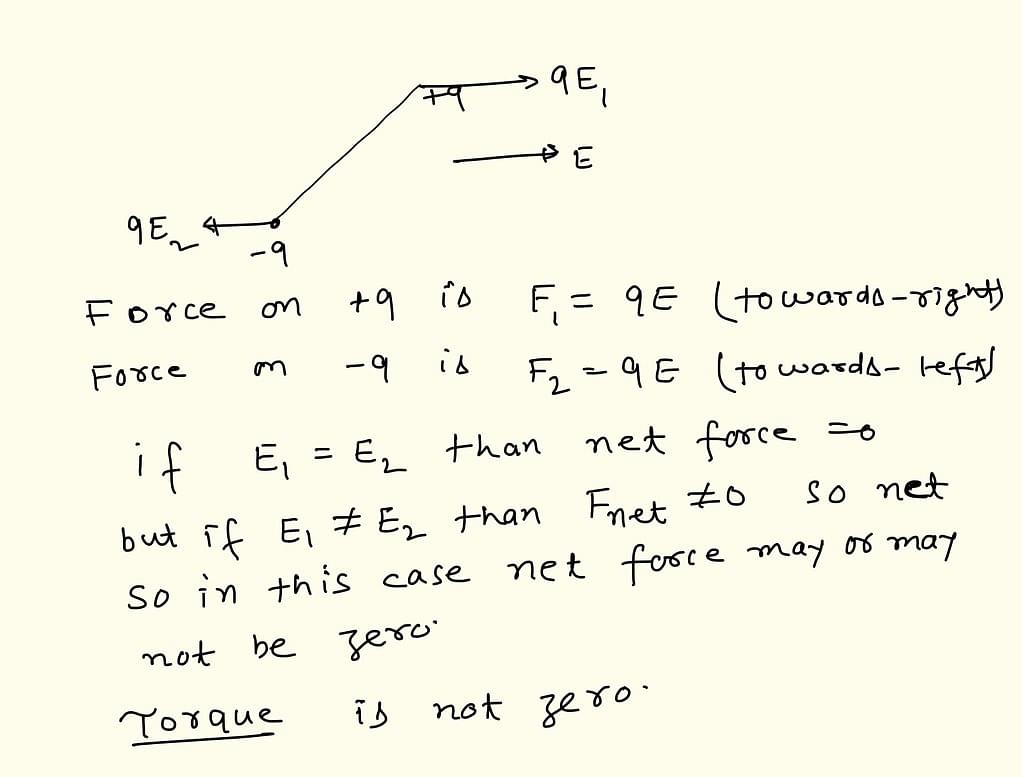Collegedunia Team Content Curator
Content Curator
When an electric dipole is placed in a non-uniform electric field, it experiences a net force and a net torque.
- The electric field exerts a force on the charges of the dipole, with the positive charge experiencing a force in the direction of the electric field.
- The negative charge experiencing a force in the opposite direction. As a result, the dipole experiences a net force that tends to align it with the direction of the electric field.
- At the same time, the non-uniform electric field produces a torque on the dipole, causing it to rotate.
- The torque is given by the cross product of the dipole moment vector and the electric field vector.
- The magnitude of the torque is maximum when the dipole is oriented perpendicular to the electric field, and zero when the dipole is aligned parallel to the electric field.
The net effect of the force and torque is to cause the dipole to rotate and align with the direction of the electric field. This process is known as dielectric polarization, and is important in many applications, such as in the functioning of capacitors, where it helps to store electrical energy.

Electric Dipole in Non-uniform Electric Field
Check out:






Comments